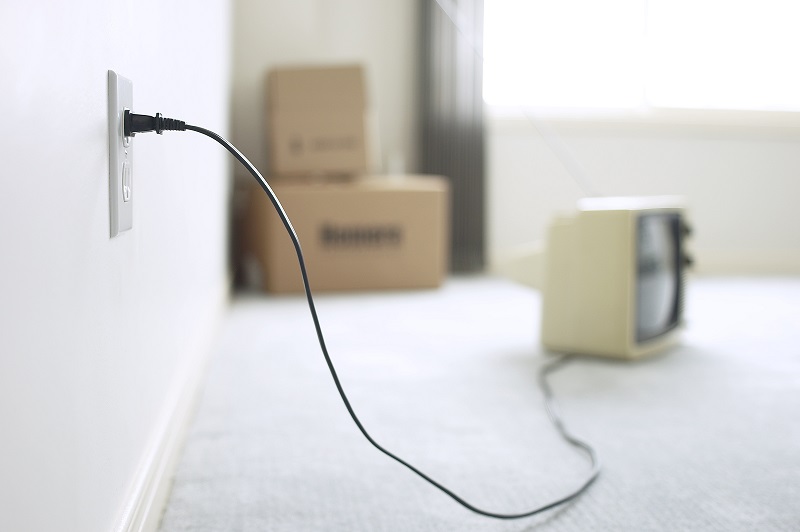Electrical safety in the private rented sector
Contents |
[edit] Introduction
All tenants deserve to live in homes which are safe, notably from risks such as fire or electrocution. To protect tenants, ECA, Electrical Safety First and other partners pressed the Government for a sustained period to introduce legislation. As a result of this, the Government recently introduced new regulations to improve electrical safety in the rented sector.
As of 1st June 2020, the ‘Electrical Safety in the Private Rented Sector (England) Regulations 2020’ has been in force utilising the powers set out in the Housing and Planning Act 2016. It also makes amendments to the ‘Management of Houses in Multiple Occupation (England) Regulations 2006’.
These Regulations apply in England only to all new specified tenancies from 1st July 2020, and all existing specified tenancies from 1st April 2021.
[edit] Regulations in the devolved nations
Landlords in Wales are subject to different regulations under the Building Regulations 2010, the Electrical Equipment (Safety) Regulations 1994 and the Renting Homes (Wales) act 2016.
Northern Ireland has no laws that specifically cover electrical safety in privately rented accommodation, however properties must be fit for human habitation. Northern Ireland Electricity can disconnect the electrical supply if it believes that the electricity at a property is unsafe.
Private landlords in Scotland are required by law (Housing (Scotland) Act 2006) to ensure that their properties are electrically safe.
[edit] Safe electrical installations
This new statutory requirement places a greater emphasis on the private landlord to ensure that their electrical installations are fit for use. The Regulations make it mandatory in most cases for private landlords to have regular and valid electrical installation condition reports (EICR) undertaken in their properties at intervals of no more than five years and for this inspection to be carried out by a qualified person.
Any dangerous situations that require urgent remedial action (C1, C2 or FI) noted on the EICR should be rectified within 28 days. Failure to comply with these Regulations carries significant financial penalties.
Landlords must take their responsibilities seriously or face the consequences. Landlords will however also benefit from these regulations by knowing that their properties are electrically sound, protecting their investments.
Landlords should therefore choose those who are to carry out these electrical condition reports with care and check their qualifications.
For further general guidance, see the MHCLG website.
This article was originally published on the ECA website on 1 June 2020. It was written by Mike Smith, ECA technical director.
--ECA
[edit] Related articles on Designing Buildings
- 2021 PRS electrical safety standards.
- Articles about electricity.
- Articles by the Electrical Contractors' Association (ECA).
- Converting commercial offices to residential accommodation.
- Homes (Fitness for Human Habitation) Act 2018.
- Landlord
- Electrical safety.
- Electrical test equipment for use on low voltage electrical systems GS38.
- Property disrepair and landlord liabilities.
- Safety.
- Tenant.
Featured articles and news
A change to adoptive architecture
Effects of global weather warming on architectural detailing, material choice and human interaction.
How big is the problem and what can we do to mitigate the effects?
Overheating guidance and tools for building designers
A number of cool guides to help with the heat.
The UK's Modern Industrial Strategy: A 10 year plan
Previous consultation criticism, current key elements and general support with some persisting reservations.
Building Safety Regulator reforms
New roles, new staff and a new fast track service pave the way for a single construction regulator.
Architectural Technologist CPDs and Communications
CIAT CPD… and how you can do it!
Cooling centres and cool spaces
Managing extreme heat in cities by directing the public to places for heat stress relief and water sources.
Winter gardens: A brief history and warm variations
Extending the season with glass in different forms and terms.
Restoring Great Yarmouth's Winter Gardens
Transforming one of the least sustainable constructions imaginable.
Construction Skills Mission Board launch sector drive
Newly formed government and industry collaboration set strategy for recruiting an additional 100,000 construction workers a year.
New Architects Code comes into effect in September 2025
ARB Architects Code of Conduct and Practice available with ongoing consultation regarding guidance.
Welsh Skills Body (Medr) launches ambitious plan
The new skills body brings together funding and regulation of tertiary education and research for the devolved nation.
Paul Gandy FCIOB announced as next CIOB President
Former Tilbury Douglas CEO takes helm.
UK Infrastructure: A 10 Year Strategy. In brief with reactions
With the National Infrastructure and Service Transformation Authority (NISTA).
Ebenezer Howard: inventor of the garden city. Book review.
Airtightness Topic Guide BSRIA TG 27/2025
Explaining the basics of airtightness, what it is, why it's important, when it's required and how it's carried out.























